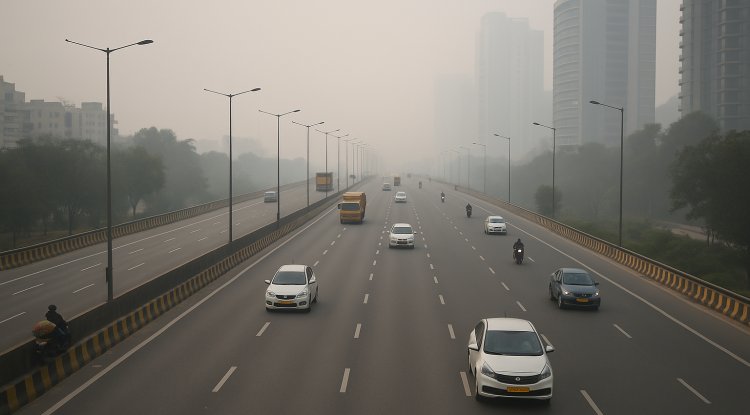Asean Needs Proven Returns to Attract ESG Investment
Southeast Asia must build a financial track record in ESG projects to attract private investment. UK-based BII highlights regulatory and infrastructure gaps as barriers, while committing over £206 million to support energy transition through platforms and direct investments in Indonesia, Vietnam, and the Philippines.

Southeast Asian countries need to establish a record of financial returns on environment, social and governance (ESG) activities in order to draw more sources of private-sector finance, British International Investment (BII), the UK development finance institution, says. The region still fails to mobilize private capital for its energy transition because it has unbankable projects, is haunted by regulatory issues, and is caught in the squeeze caused by extremely high interest rates in international markets.
BII, which had entered the Southeast Asia market early in 2023, has pledged to invest £500 million by 2026 to help the region shift to a low-carbon economy. More than £206 million has been invested to date across a mix of direct and platform-style investments. These include a co-investment of US$80 million with Pentagreen Capital, a debt-finance platform backed by Temasek and HSBC, and co-investing in platforms like Skye Renewables and Sustainable Asia Renewable Assets.
In spite of this evolution, there is general agreement that Southeast Asia is just starting to build up mature, investible opportunities in clean energy, waste management, and electric mobility. Western nations and the OECD have investors ready to invest their money in the region but insist on being sure that projects have the potential to generate profitable returns. The present environment of investment is confronted with the lack of infrastructure, incoherent regulation, and the rise in risk premia typical of emerging markets.
The biggest constraint on investor involvement is the inability of ESG-related infrastructure to deliver stable returns. Although government policies within countries are favorable towards green projects, implementation is impeded by complex land acquisition procedures, inefficient transmission lines, and delays in regulation. All these contribute to higher cost and risk of the project, and it is challenging to offer such projects as economically sound prospects to institutional investors.
To this is added high world interest rates that discourage private investors from entering high-risk markets unless returns are properly proven. This further adds to the necessity for Southeast Asia to be able to present remarkable case studies that have been earning good, sustainable returns.
BII: Its strategy is to be a catalyst for investment by assuming early-stage risk. As a development finance institution, it invests patient capital—willing to wait for longer time periods and targeting lower initial returns—to enable projects to reach financial maturity. When the projects start generating cash flows, BII looks for commercial investors to be attracted to invest additional capital at scale.
It has a five-year strategic investment strategy and adheres to the timelines of major climate and development goals in its capital allocation. Its focus areas in Southeast Asia include utility-scale renewable energy, commercial and industrial power generation, waste-to-energy facilities, electric vehicle (EV) charging infrastructure, and waste and water management. Its priority investment countries are Indonesia, the Philippines, and Vietnam, which are highly exposed to climate change and have large clean energy infrastructure gaps.
As of the close of 2023, BII's regional portfolio included investments in 27 firms with a value of US$53 million. These are extended in different forms of financial instruments in the form of debt, equity, mezzanine financing, and financing commercial banks lending to environmentally focused small and medium-sized enterprises (SMEs). BII committed to investing no less than 30% of its fresh annual investments in climate activities globally, and Southeast Asia is a key market under its strategy.
Both public and private partners recognize the intricacy of investment in the region. Market situations among countries are very varied, and developing sustainable energy infrastructure typically involves close collaboration with governments, host agencies, and development partners. Harmonized and facilitative regulatory environments form the core to help support long-term planning for investment.
To further improve the investment climate, BII recommends that Southeast Asian nations should create policy climates to facilitate ESG financing, rationalize project implementation processes, and give high priority to investment-readiness in the infrastructure sectors. This includes rationalizing permit processes, expediting the infrastructure buildup of power networks, and enforcement of land and environmental regulations with greater transparency.
Although there has been some development, there are still huge gaps to be bridged. Private investors will most likely invest when they observe a pipeline of successful, profitable projects. China and India have been able to achieve such a track record, and Southeast Asia must make the effort to follow the same route by developing reliability and transparency in getting projects done.
Finance institutions such as BII play a vital role in closing the gap between early-stage project development and private capital injection. Through taking upfront risk, they can facilitate proof of project viability, thereby establishing market confidence and locking in further financing. The first-stage investments provide leeway for governments and finance institutions to learn and build their infrastructure infrastructure to scale sustainable infrastructure.
Finally, the goal is that ESG projects are self-financing on commercial investment and recycled development capital is pumped into new projects. It will not be immediate, but establishing credibility through outcomes demonstrable is at the heart of taking Southeast Asia to its climate and sustainability goals.
As the region continues to grapple with rising climate pressures, its success in clean energy transition, emissions mitigation, and climate resilience will rely on the capacity to mobilize private capital at scale. The achievement of financial milestones from ESG metrics is key to achieving this and reaping long-term environmental and economic dividends.
Source and Credits:
Reporting by Janice Lim, dated 6 July 2025. Image and words spoken by British International Investment.
What's Your Reaction?

















